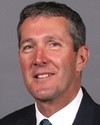If I may, I don't like the word “clientele”. This is a diversified population.
A few years ago, they were thought of as persons—mostly men—of a certain age who had alcohol problems. That's how they were viewed. Currently, this concerns increasing numbers of youths, minors, runaways, young adults and women.
Qualitative research is being done right now in Quebec City. What leads these women to exclusion and to life in the streets? This also affects certain families that experience impoverishment, a loss of housing, a loss of social network and so on. These people don't have housing or a social network and often have trouble getting access to public services. Their last safety net is often the community sector, which opens its doors more readily.
These are also people who have problems related to homelessness. This isn't just a problem of living on the street; it's quite complex. These people have physical and mental health problems that are in addition or are the origin of their homelessness problem. We see dependence problems that were there first or that appear, quite frequently among young people, when they smoke on the street. If they aren't drug addicts, they ultimately become drug addicts because they get noticed.




